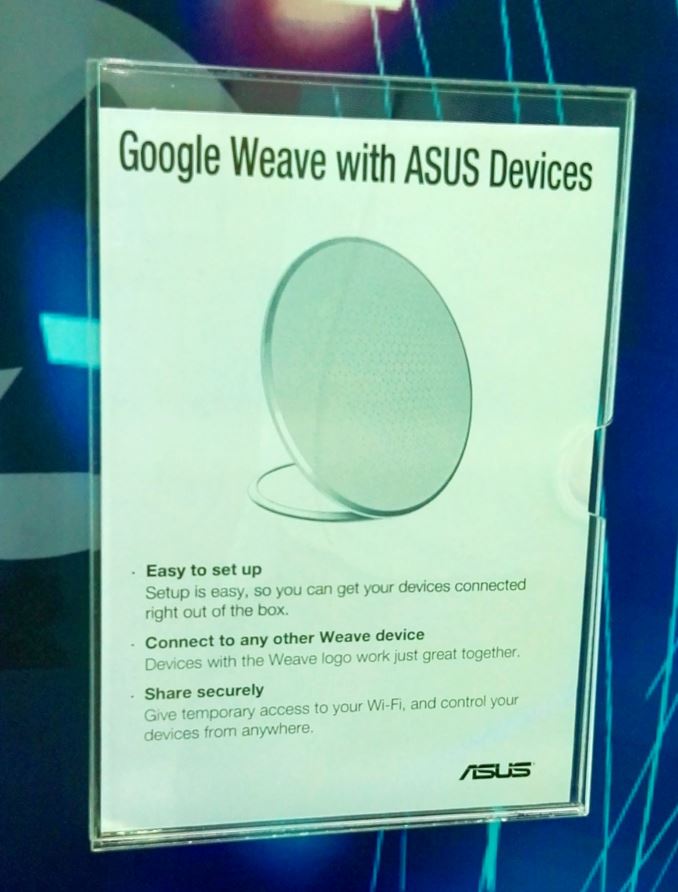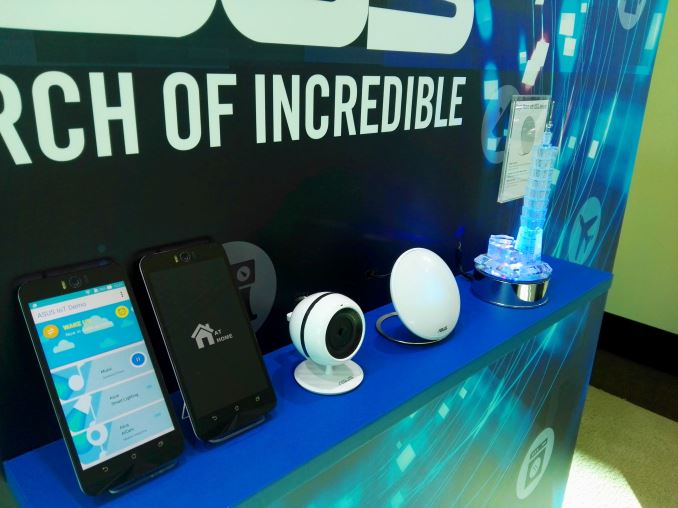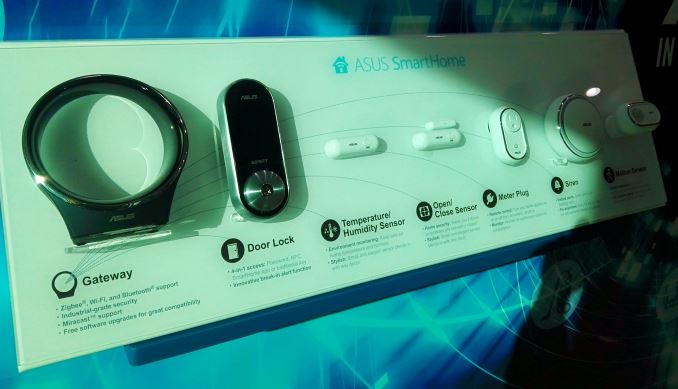ASUS Booth Tour at CES 2016: 10G Switches, External GPU Dock, USB-C Monitor and more
by Ian Cutress on January 19, 2016 9:00 AM ESTIn the last couple of years, every show we have attended affords the same questions on the Internet of Things: where do we see it going, when is it going to take off, what volume should be expect and what form factor will it arrive? You may have noticed that AnandTech has been relatively light on IoT coverage, perhaps for good reason: there’s an awful lot of awful hardware moving around at low cost, with most of it still in that beta stage of anything.
When the Internet of Things Becomes Useful
For me (Ian) personally, IoT has to satisfy two crucial categories: it has to be able to improve my daily flow of things, and it has to seamlessly work together. At the minute, most IoT fails to do either, especially with sportswear that merely tells you about what you have done. I don’t necessarily want to know what I have done (yes, I get the big data and improve angle), I want to be able to get things done quicker with the equipment at hand. Something as simple as being able to preopen a Chrome window at the webpage I need on my PC while I’m in the kitchen washing up so that it is there when I get to the computer. Or something that will tell me if the fridge/freezer door has been left open for more than five minutes again. Or a series of power monitoring outlets that I can access from a central application to see where my energy provider is clearly picking numbers out of thin air from. Or I can preload the next few music tracks/videos in my stream when I’m in another part of the house so that when I get there, it isn’t buffering the content or the advertisements for the first fifteen seconds. Does that sound like too much?
As we take baby steps into the future, ASUS is playing on the Google Weave project. Weave is designed to be the standardized API glue that binds products with Weave certification to be able to communicate with each other, the cloud, and the devices a user owns. As noted above, the design is meant for intra-comms within a network and internet communication over the web.
Over the next few years, as ASUS feels its way into the IoT space, I was told that Weave will be one of the standards they will keep close to, especially when it comes to hardware and software.
ASUS for the most part already offers a number of ‘SmartHome’ products, as shown above, and the assumption is that many of these down the line will fit into that Weave mold. My contention is that there are two very distinct levels of IoT product: ones that are designed to be binary (power switch is on/off), or ones that are designed to provide feedback (power switch that gives you a reading). It is the feedback devices that need to be configured so users can interpret the data. For example, if I have several power switches that can read power consumption, I want to be able to view how all of them are doing and perhaps record that data. If the software only allows me to connect with one at a time, or only view one at a time, that leaves it in the hands of the crowd that only wants binary operation. Ultimately I would argue it is the non-binary crowd who will be the early adopters. Same thing for smart locks, or temperature sensors – if I have several smart locks around the house, I want to know the status of each one, and perhaps I want push notifications when one is used (or abused).
I always say a lot of IoT devices have potential, the issue for me is always going to be utility, configuration, ease of use and software. Though the obvious prediction for now is that there will be several standards that won’t interoperate and a user will have to invest into a certain ecosystem to get the best benefit. That kind of sounds like the smartphone Android vs iOS debate all over again. Fingers crossed it runs a bit smoother for IoT.













50 Comments
View All Comments
SirKnobsworth - Wednesday, January 20, 2016 - link
I was under the impression that not all devices support all 4 lanes, but I might have been mistaken.extide - Tuesday, January 19, 2016 - link
It IS coming from the GPU. As mentioned above, there is a multiplexer that basically unplugs the high speed lanes in the USB type C connector FROM the USB bus and then connects them TO the displayport signals directly. USB alternate mode doesnt use the superspeed usb bus. So it is basically displayport with a different cable/connector, but otherwise the same.JimmaDaRustla - Tuesday, January 19, 2016 - link
Looking forward to the Z170 S - hopefully it is priced well. I kind of find it odd that it has like a dozen fan plugs, but only one M.2 slot though.damianrobertjones - Tuesday, January 19, 2016 - link
The monitor shape looks like a Microsoft Surfa.... Nope, never, ever seen that design before.DanNeely - Tuesday, January 19, 2016 - link
USB2 powered laptop screens with that sort of case have been around for longer than there was a surface. They might pre-date the ipad as well; I'm not sure exactly how long ago I first saw one.ddriver - Tuesday, January 19, 2016 - link
I'd get one, at a good price and with touch input. This one doesn't seem to have touch, which is quite silly IMO. They target it as a second monitor for laptops and tablets, but I reckon it will be more useful as a touch display for a desktop system with a big non touch screen.zeeBomb - Tuesday, January 19, 2016 - link
Wow these are dope!xthetenth - Tuesday, January 19, 2016 - link
I definitely like the looks of the keyboard having a numpad but being able to move it. I'd prefer it to the left a lot of the time just because the keyboard and mouse are awfully wide otherwise.lucam - Tuesday, January 19, 2016 - link
Still no IPad Pro review in the horizon?Shadow7037932 - Wednesday, January 20, 2016 - link
Just like the Moto X review...